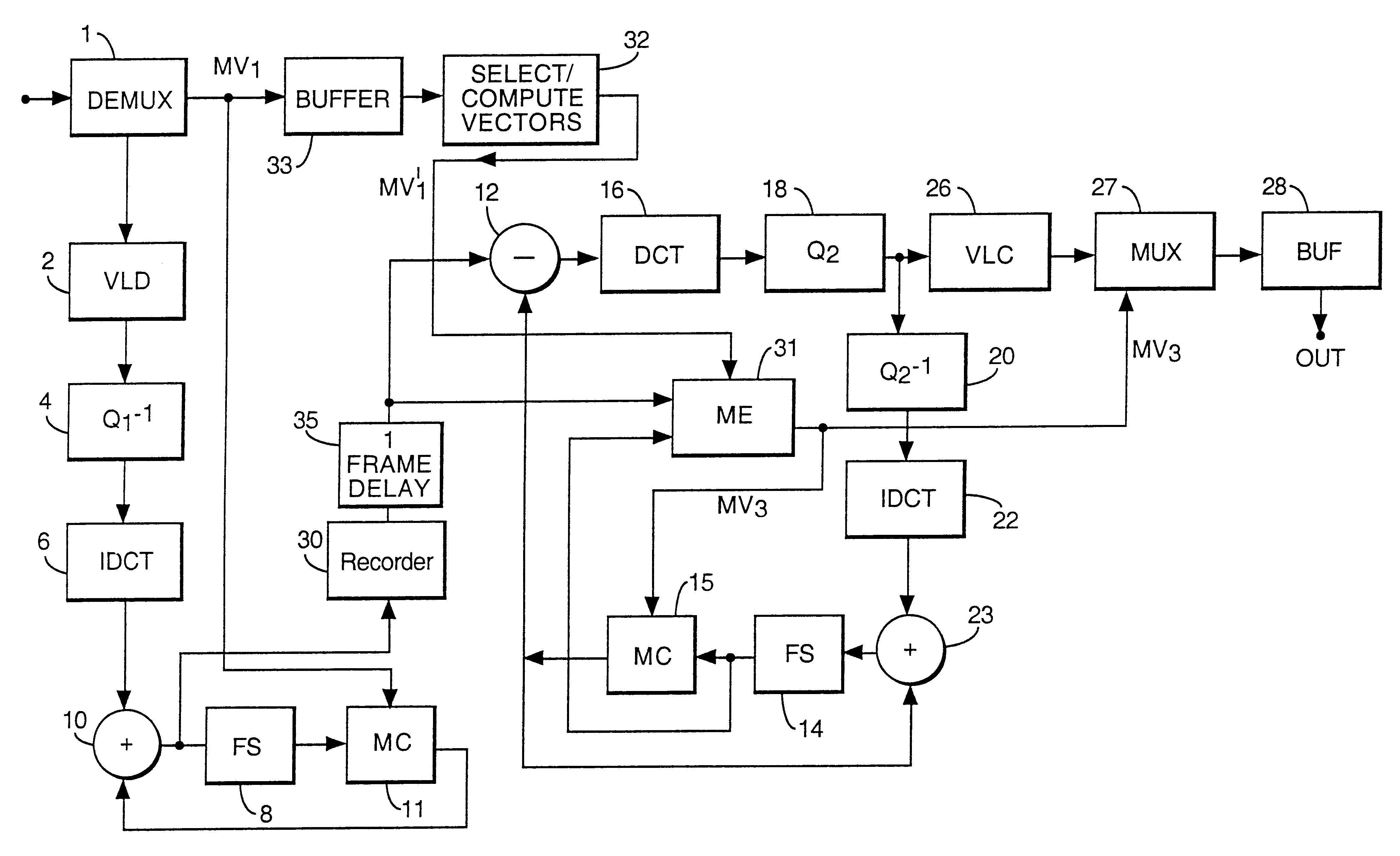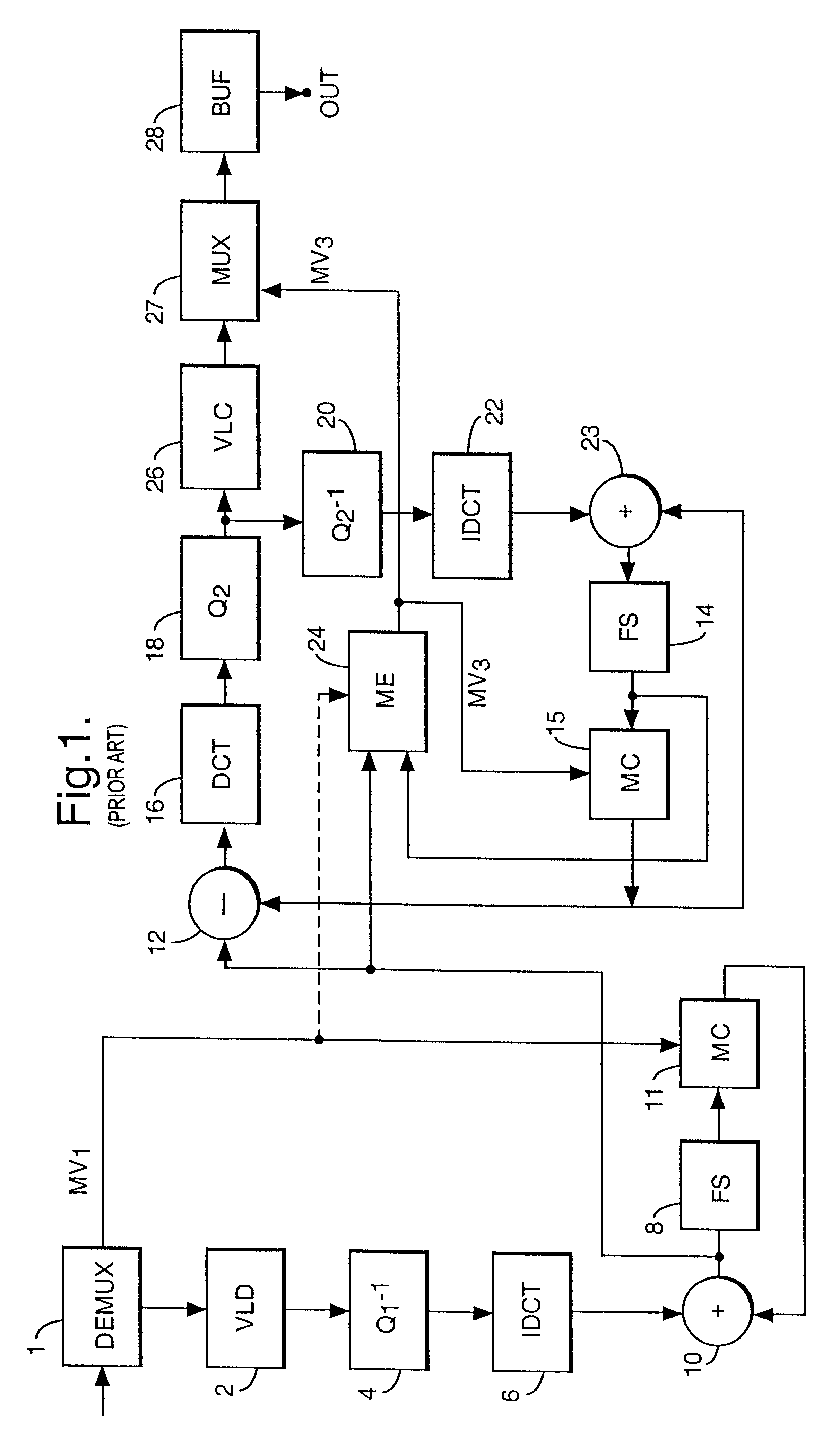Transcoding
a video signal and transcoding technology, applied in the field of transcoding video signals, can solve the problems of high bandwidth and expensive transmission, and achieve the effect of reducing the cost of transmission
- Summary
- Abstract
- Description
- Claims
- Application Information
AI Technical Summary
Problems solved by technology
Method used
Image
Examples
Embodiment Construction
A transcoder is used to convert signals encoded according to a first format into signals encoded according to a second format. FIG. 1 shows a known form of transcoder which is arranged to convert video signals coded at a particular bit rate (e.g. 64 k bit / s) conforming to the H.261 standard to video signals coded at a lower rate (e.g. 32 k bit / s) conforming to the H.261 standard. Clearly the transcoder may, in practice, be arranged to convert signals from and to other formats.
The decoder part of the transcoder shown in FIG. 1 comprises a de-multiplexer 1 which receives an incoming coded data stream conforming to the H.261 standard and de-multiplexes the data stream into its constituent parts of compressed video data and motion vectors. The compressed video data is then decoded by a variable length decoder (VLD) 2, and then passes to an inverse quantiser 4 which outputs values of the discrete cosine transform (DCT) coefficients. The DCT coefficients are then transformed back into the...
PUM
 Login to View More
Login to View More Abstract
Description
Claims
Application Information
 Login to View More
Login to View More - R&D
- Intellectual Property
- Life Sciences
- Materials
- Tech Scout
- Unparalleled Data Quality
- Higher Quality Content
- 60% Fewer Hallucinations
Browse by: Latest US Patents, China's latest patents, Technical Efficacy Thesaurus, Application Domain, Technology Topic, Popular Technical Reports.
© 2025 PatSnap. All rights reserved.Legal|Privacy policy|Modern Slavery Act Transparency Statement|Sitemap|About US| Contact US: help@patsnap.com



